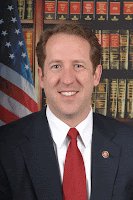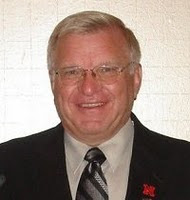(Lincoln, Neb.)
Photo Gallery Gov. Dave Heineman today called attention to Nebraska’s celebration of National Ag Week March 17-23. The Governor unveiled a new agricultural magazine, announced agriculture poster contest winners and outlined community stops planned for March 19.
“Agriculture is our state’s largest industry,” said Gov. Heineman. “Our farmers and ranchers work hard to raise the food, fuel and fiber we all use in our everyday lives. For those efforts, they deserve our appreciation.”
Governor Heineman was joined by Lt. Gov. Lavon Heidemann, Nebraska Agriculture Director Greg Ibach, Nebraska Farm Bureau First Vice President Mark McHargue, and the Brian and Hilary Maricle family, farmers from Albion.
“As a fourth generation farmer in Nebraska, I understand the contribution agriculture brings to the state and the world,” said Lt. Gov. Lavon Heidemann. “Agriculture is our state’s number one industry and it is important to raise awareness by celebrating National Agriculture week.”
Ibach announced the availability of a new magazine called Nebraska Agriculture and You. The magazine, published by the Nebraska Department of Agriculture (NDA), is designed to share information about the state’s agriculture industry with general consumers. The Maricles are featured in the magazine.
“These days many folks do not have a direct tie to a farm or ranch, so their knowledge of food production is limited. In addition, today’s agriculture is also about fuel and fiber and all the agribusinesses associated with these things,” said Dir. Ibach. “The magazine is designed to help people understand a little bit about each of these, as well as give them a grasp of how critical agriculture is to the economy in Nebraska.”
The goal of NDA is to circulate the free, annually-produced magazine in settings where the general public can enjoy it, such as office lobbies of doctors, dentists, and hair salons. Nebraska FFA chapter members are helping deliver magazines to these types of locations in 20 of the largest communities.
“FFA students will be fanning out to these businesses in the next several weeks,” said Dir. Ibach “We hope businesses will support this educational effort by placing the magazines in their lobbies.”
Magazines also will be direct-mailed to select locations in Lincoln, Omaha and Grand Island and circulated through public libraries, Cooperative Extension, and chambers of commerce. Additionally, the magazine is available digitally at
www.agr.ne.gov.
Additionally, Gov. Heineman announced the NDA Agriculture Poster Contest award winners. Each year elementary students have the opportunity to discuss agriculture while creating a poster to submit to NDA.
This year NDA had 2,987 entries, about double the usual amount. Winners include:
In the 1st and 2nd grade division: 1st place is: Trevor Goesch a second grader from West Boyd in Butte
2nd place is: Matt Cover a second grader from Weeping Water Public School in Weeping Water
3rd place is: Samantha Burch a second grader from Weeping Water Public School in Weeping Water
Governor’s Choice is: Noah Morlan a second grader from Weeping Water Public School in Weeping Water
In the 3rd and 4th grade division: 1st place is: Ryan Sand a fourth grader from Tri-County Public Schools in DeWitt
2nd place is: Johnny Kaczmarek a third grader from Holy Ghost Catholic in Omaha
3rd place is: Levi Belina a third grader from Howells Community Catholic School in Howells
Governor’s Choice is: Evie Schlickbernd a fourth grader from Guardian Angels in West Point
In the 5th and 6th grade division 1st place is: Tatum Vondra a sixth grader from Milford Elementary in Milford
2nd place is: Elizabeth Calderon a fifth grader from Knickrehm Elementary in Grand Island
3rd place is: Gustavo Matias a fifth grader from Knickrehm Elementary in Grand Island
Governor’s Choice is: Sierra Kile a sixth grader from St. Cecilia in Hastings
“It’s a fun way for students to explore their knowledge of farming and ranching,” said Gov. Heineman. “They are always very creative.”
The Governor was joined by Farm Bureau’s First Vice President to announce the March 19 Ag Day community visits. This year the Governor, Ibach, State Senator Ken Schilz will join Nebraska Farm Bureau President Steve Nelson to visit Tecumseh, Papillion, and Wayne. The group will discuss issues such as livestock development, agricultural career opportunities, and agriculture’s role in the state economy during events at each stop.
"For us, farming and ranching isn’t just a job. It’s a way of life. Our belief is that there are few higher callings than helping provide the fundamental needs of food, fiber and energy for others,” said Mark McHargue. “Fortunately we live in a state with land and natural resources that gives us the ability to carry out our mission in providing those basic needs not just for Nebraskans, but for people across the country and the world. We hope Nebraskans will join us during National Agriculture week in celebrating our state’s heritage in agriculture."









